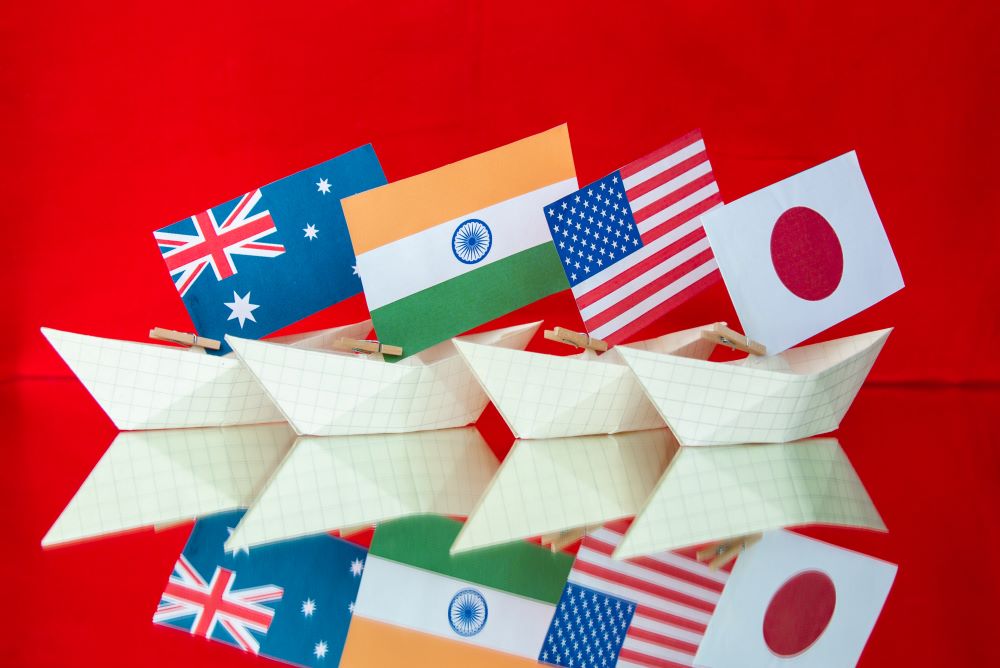
US president Joe Biden used his first Asia tour this week to formally introduce the Indo-Pacific Economic Framework (IPEF), his administration’s Asia-Pacific economic strategy.
The US withdrew from the Trans-Pacific Partnership trade deal five years ago with the remaining 11 countries going on to launch the Comprehensive and Progressive Trans-Pacific Partnership (CPTPP).
With the US absent in the region, China has exerted greater influence and has even requested to join the CPTPP.
Here are seven things to know about IPEF:
1. Who’s in IPEF
As well as the US, the initial countries will include members of the Quad security alliance: Australia, India and Japan.
It also includes seven ASEAN countries like Brunei, Indonesia, Malaysia, the Philippines, Singapore, Thailand, Vietnam, as well as South Korea and New Zealand.
Fiji joined IPEF a few days later, the first Pacific Island nation to do so.
Washington has said the framework is open to new participants.
2. What IPEF is …
IPEF has four pillars:
- supply-chain resilience
- clean energy, de-carbonisation and infrastructure
- taxation and anti-corruption
- fair and resilient trade
The administration has been working to include digital issues like localisation and cross-border flows of data.
“Through this initiative, we aim to contribute to cooperation, stability, prosperity, development, and peace within the region,” the 13 member countries said in a joint statement announcing the IPEF this week.
3. ...And what it’s not: a trade deal
However, IPEF won’t include lower tariffs or offer better access to US markets, which has led some to question whether it has “teeth” or is more symbolic than anything, reports CNBC.
“I think President Biden, unfortunately, indicated it shouldn’t even be considered the beginning of a trade agreement,” David Adelman, Krane Funds Advisors’ managing director and former US ambassador to Singapore, told CNBC.
4. A challenge to China
The IPEF is Biden’s attempt to counter China’s clout in Asia in the economic sphere by partnering with other countries, reports Bloomberg.
Beijing has described the move as the Biden administration's attempts to “contain” China and create divisions, reports ZDNet.
Chinese foreign minister Wang Yi said that rather than drive free trade, the IPEF attempted to pursue protectionism, with the US undermining existing regional cooperation infrastructures instead of following free-trade rules.
“Is the US trying to speed up the recovery of the global economy or is it trying to create economic decoupling, technological blockade and industrial disruption, and aggravate the supply chain crisis? The US should learn from the trade war it launched against China a few years ago, which brought severe consequences to the world and US itself,” he said.
Global Times, which is owned by China’s state-run People’s Daily said the US was using the trade framework to “dominate” rules and standards in digital technologies, such as artificial intelligence and 5G.
5. Why Indo-Pacific?
The combined GDP of the participating countries represent 40% of global GDP and about 60% of the world’s population reside in the Indo-Pacific.
The region is expected to be the biggest contributor to global growth over the next three decades.
Aligning the US to the region, Biden said: “The future of the 21st century economy is going to be largely written in the Indo-Pacific — in our region.”
The US wants to restore its economic leadership in the region and is “presenting Indo-Pacific countries an alternative to China’s approach,” said Secretary of Commerce Gina Raimondo.
6. But what about RCEP?
China meanwhile has pinned its flag to the Regional Comprehensive Economic Partnership (RCEP) grouping of 15 nations that came into effect at the beginning of 2022, as previously covered in the IOE&IT’s Daily Update.
It focuses heavily on cutting tariffs and increasing market access but is seen as less comprehensive than the region’s other big trade arrangement, the CPTPP, which the UK is trying to join.
7. Market access – ‘it’s lacking from IPEF’
International trade expert and professor of law at the Chinese University of Hong Kong, Bryan Mercurio, said the US would bring money to the IPEF, “particularly for clean energy, maybe even some for supply chain resilience, and anti-corruption,” but that more was required.
“Of course, what Asian partners really want is trade. I think they want market access. And the trade component of the IPEF is really lacking,” he added.
According to the FT, the US struggled last year on to convince many south-east Asian nations and India to join.


